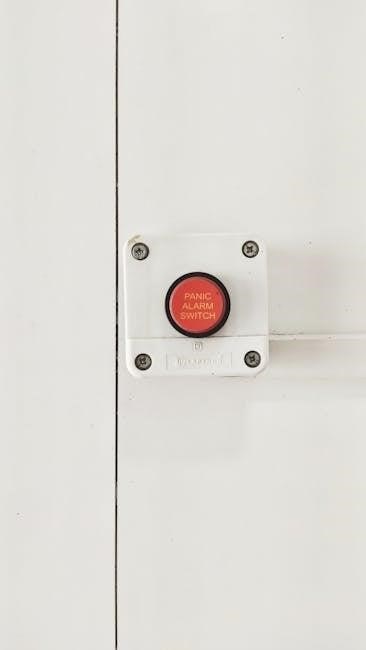CPT Manual and the Nervous System
The Current Procedural Terminology (CPT) manual categorizes the nervous system into three distinct subheadings․ These are: Skull, Meninges, and Brain; Spine and Spinal Cord; and Extracranial Nerves, Peripheral Nerves, and Autonomic Nervous System․ These divisions aid accurate coding․

CPT coding for the nervous system is a specialized area within medical coding, focusing on procedures performed on the brain, spinal cord, and associated nerves․ Accurate coding is crucial for appropriate medical billing and insurance reimbursement․ Neurology coding relies heavily on the CPT manual, a comprehensive guide that outlines specific codes for various services․
The nervous system is divided into three key sections: Skull, Meninges, and Brain; Spine and Spinal Cord; and Extracranial Nerves, Peripheral Nerves, and Autonomic Nervous System․ Understanding these subheadings is essential for selecting the correct CPT code․ Each section encompasses a wide range of procedures, from diagnostic imaging to complex surgical interventions․
Medical coders specializing in neurology must possess a thorough understanding of anatomy, surgical techniques, and CPT coding guidelines․ They must be able to accurately interpret medical documentation, including operative reports and progress notes, to identify the appropriate codes․ Furthermore, coders must stay updated on the latest coding changes and guidelines issued by the American Medical Association (AMA), which publishes the CPT manual․
Effective CPT coding ensures that healthcare providers receive fair compensation for their services and that patients’ insurance claims are processed accurately․
Overview of the CPT Manual
The Current Procedural Terminology (CPT) manual is a comprehensive listing of descriptive terms and identifying codes for reporting medical services and procedures performed by physicians and other healthcare professionals․ Published and maintained by the American Medical Association (AMA), it serves as the standard for coding and billing medical services across the United States․
The CPT manual is organized into three main sections: Category I, Category II, and Category III codes․ Category I codes represent the most commonly performed procedures and services, and they are further divided into various sections based on medical specialty or body system․ One such section is dedicated to the nervous system, which includes procedures related to the skull, meninges, brain, spine, spinal cord, extracranial nerves, peripheral nerves, and autonomic nervous system․
Category II codes are supplemental tracking codes used for performance measurement, while Category III codes are temporary codes for emerging technologies, services, and procedures․ The CPT manual is updated annually to reflect advancements in medical practice and changes in coding guidelines․
Accurate and consistent use of CPT codes is essential for proper medical billing, insurance reimbursement, and data collection․ Healthcare providers and coding professionals must stay informed about the latest CPT updates and guidelines to ensure compliance and optimize revenue cycle management․

Nervous System Subheadings in CPT
Within the CPT manual, the nervous system is categorized into specific subheadings for clarity and efficient coding․ These subheadings include Skull, Meninges, and Brain; Spine and Spinal Cord; and Extracranial Nerves, Peripheral Nerves, and Autonomic Nervous System, which is very important․
Skull, Meninges, and Brain
This section of the CPT manual focuses on procedures related to the head․ Specifically, it encompasses interventions involving the skull, which provides bony protection for the brain․ The meninges, the protective membranes surrounding the brain and spinal cord, are also addressed within this category․ This includes procedures like biopsies, repairs, or shunt placements․
Furthermore, this subheading details various surgical and diagnostic procedures performed directly on the brain․ These may include craniotomies for tumor removal, aneurysm clipping, or the evacuation of hematomas․ Stereotactic procedures, which use precise three-dimensional coordinates to target specific brain regions, are also coded under this section․
Coding in this area requires careful attention to detail, differentiating between approaches (e․g․, open versus endoscopic), the specific structures involved, and the complexity of the procedure․ Accurate coding ensures appropriate reimbursement and provides valuable data for medical research and quality improvement initiatives․ Understanding anatomical nuances and surgical techniques is crucial for correct CPT code assignment within the Skull, Meninges, and Brain subheading․
Spine and Spinal Cord
The Spine and Spinal Cord subheading in the CPT manual covers procedures targeting the vertebral column and its delicate neural contents․ This section encompasses a wide array of interventions, ranging from diagnostic imaging to complex surgical reconstructions․ Procedures involving the bony spine, such as laminectomies, fusions, and fracture repairs, are coded here․
Furthermore, this subheading includes codes for procedures directly addressing the spinal cord itself․ These may involve decompression of the spinal cord due to stenosis or herniated discs, tumor resections, or the placement of spinal cord stimulators for pain management․ Myelograms, which involve injecting contrast dye to visualize the spinal cord and nerve roots, also fall under this category․
Accurate coding in this section demands a thorough understanding of spinal anatomy and surgical approaches․ Distinguishing between different levels of the spine (cervical, thoracic, lumbar, sacral) and the specific procedures performed is essential for correct code assignment․ Additionally, the CPT manual often differentiates codes based on the number of vertebral segments involved in a procedure, further emphasizing the need for precise documentation and coding expertise․
Extracranial Nerves, Peripheral Nerves, and Autonomic Nervous System
This subheading within the CPT manual addresses procedures involving nerves located outside the skull and spine, along with the autonomic nervous system․ It covers a broad spectrum of interventions, encompassing nerve repairs, decompressions, and excisions․ Coding in this area requires careful attention to the specific nerve targeted and the nature of the procedure performed․
Procedures on peripheral nerves, such as those in the limbs, fall under this category․ Carpal tunnel release, ulnar nerve transposition, and nerve grafting are common examples․ For extracranial nerves, procedures like trigeminal nerve blocks for pain management or facial nerve decompression are included․
The autonomic nervous system, which controls involuntary functions, also has its related procedures coded here․ These can involve interventions like sympathectomies for hyperhidrosis or other autonomic disorders․ Accurate coding demands a clear understanding of the autonomic nervous system’s anatomy and the specific sympathetic chain targeted․ Distinguishing between different nerve branches and accurately documenting the extent of the procedure are paramount for correct code selection within this subheading․

Detailed Breakdown of Subheadings
Each subheading—Skull, Meninges, and Brain; Spine and Spinal Cord; Extracranial Nerves, Peripheral Nerves, and Autonomic Nervous System—contains specific CPT codes․ These codes detail various procedures, requiring precise documentation for accurate billing and proper medical record keeping․
Procedures Related to Skull, Meninges, and Brain
This section of the CPT manual encompasses a wide array of surgical and diagnostic procedures focusing on the head’s intricate structures․ These procedures address conditions affecting the skull, the protective meninges surrounding the brain, and the brain itself․ Common procedures include craniotomies, where a portion of the skull is removed to access the brain for tumor removal, aneurysm clipping, or hematoma evacuation․
Also covered are procedures involving the meninges, such as shunt placement for hydrocephalus, a condition where excess cerebrospinal fluid accumulates in the brain․ Stereotactic procedures, utilizing precise coordinates for targeted interventions, are also included, enabling surgeons to perform biopsies or deliver radiation therapy with minimal invasiveness․
Furthermore, this section details procedures for treating skull fractures, infections of the brain or meninges (such as meningitis), and congenital anomalies affecting the brain’s structure․ Accurate coding within this subheading requires a thorough understanding of the specific anatomical site, the nature of the pathology being addressed, and the precise surgical technique employed․ Neurological coding is critical․
Procedures Related to Spine and Spinal Cord
This section of the CPT manual details a diverse set of procedures targeting the vertebral column and the spinal cord it protects․ These procedures address conditions ranging from degenerative disc disease to traumatic injuries and spinal cord tumors․ Common interventions include laminectomies, where a portion of the vertebral bone is removed to relieve pressure on the spinal cord or nerve roots․
Spinal fusions, which stabilize the spine by joining vertebrae together, are also extensively covered, often performed to treat spinal instability or deformities like scoliosis․ Procedures for treating herniated discs, such as discectomies, are included, aiming to alleviate nerve compression and associated pain․
Furthermore, this section encompasses procedures for managing spinal fractures, infections of the spine (such as osteomyelitis), and spinal cord injuries․ Coding accuracy in this area necessitates a clear understanding of the specific spinal level involved, the type of surgical approach used (anterior, posterior, lateral), and any instrumentation or grafting techniques employed․ The nervous system’s spine section is complex․
Procedures Related to Extracranial, Peripheral, and Autonomic Nerves
This CPT section focuses on surgical interventions involving nerves located outside the skull and spinal column, encompassing the peripheral and autonomic nervous systems․ Procedures address nerve compression, injuries, and tumors affecting nerves in the limbs, trunk, and face․ Carpal tunnel release, a common procedure, is coded here, relieving pressure on the median nerve in the wrist․
Nerve repairs, or neurorrhaphies, following lacerations or trauma are also detailed․ These procedures aim to restore nerve function by suturing severed nerve endings together․ Nerve grafting, where a segment of nerve is taken from another part of the body to bridge a gap in a damaged nerve, is also covered․
Additionally, this section includes procedures targeting the autonomic nervous system, such as sympathectomies, which involve interrupting sympathetic nerve pathways to treat conditions like hyperhidrosis or chronic pain․ Accurate coding demands specifying the nerves involved, the surgical approach, and any specialized techniques used, such as microsurgery or nerve stimulation․ The nervous system requires specificity․

Importance of Accurate Coding
Accurate coding within the CPT manual is critical for proper medical billing․ It ensures appropriate insurance reimbursement for neurological procedures․ Precise coding also aids in statistical reporting and tracking healthcare trends related to nervous system interventions․
Medical Billing and Insurance Reimbursement
Accurate CPT coding for nervous system procedures is paramount for seamless medical billing and appropriate insurance reimbursement․ Medical billing relies heavily on the precision of CPT codes to reflect the services rendered accurately․ When coding for procedures involving the skull, meninges, brain, spine, spinal cord, extracranial nerves, peripheral nerves, or the autonomic nervous system, coders must choose the codes that best represent the work performed․
Insurance companies use these codes to determine the appropriate level of reimbursement for healthcare providers․ Incorrect or imprecise coding can lead to claim denials, reduced payments, or even audits․ The CPT manual provides a standardized language for describing medical procedures, ensuring that all parties involved in the billing process understand the services provided․
Furthermore, accurate coding contributes to the overall financial health of healthcare practices․ Timely and correct reimbursement allows practices to maintain operational efficiency, invest in new technologies, and continue providing quality care to patients․ Staying updated with the latest CPT coding guidelines and changes is crucial for healthcare professionals involved in the billing process to ensure compliance and maximize reimbursement for nervous system-related services․





